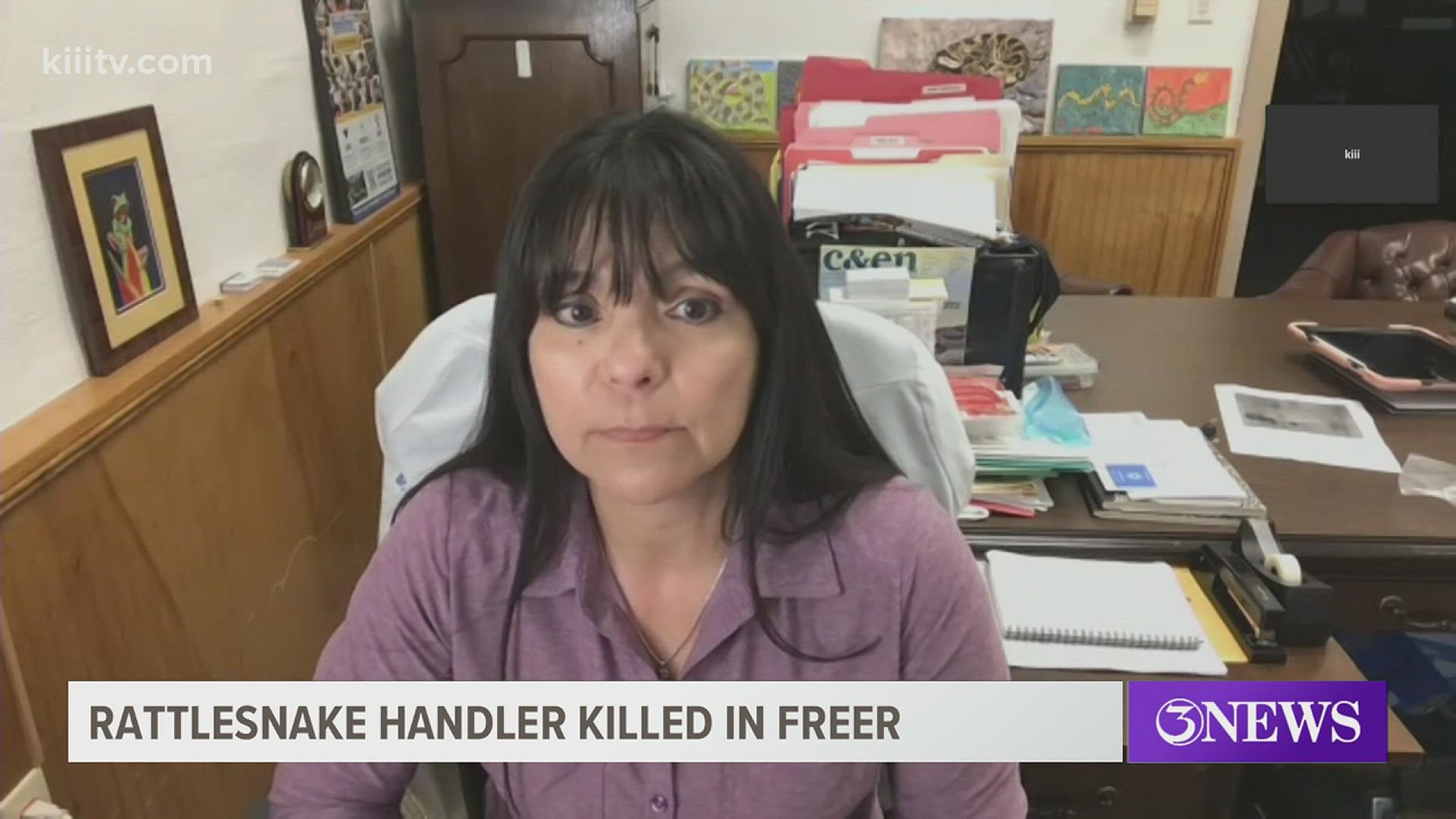KINGSVILLE, Texas — The deadly accident at the Freer Rattlesnake Roundup has many people wondering why the snake handler had to be flown to Corpus Christi.
"So sad. Was there a doctor close by and anti-venom?" asked 3News viewer Kathy Vickers on our Facebook page. "Too dangerous not to be without help on sidelines."
3News viewer Brenda Monroe Smithwick agreed.
"Wow this is so sad," she said. "You think they would have some anti-venom there already just in case an accident like this happens."
But the reason why events like these don't have what seems like obvious lifesaving supplies on hand comes down to how anti-venom must be administered.
Anti-venom must be delivered at a hospital
"Anti-venom has to be administered in a hospital setting because sometimes people can actually be allergic to the anti-venom itself," explained Dr. Elda Sánchez, the director of the National Natural Toxins Research Center at Texas A&M University Kingsville.
"There has to be antihistamines on hand so they can be treated just in case there is some type of reaction to the anti-venom."
Dr. Sánchez and her team are some of the world's leading experts on snake venom and anti-venom. They "milk" venomous snakes and then study the venom to try to find medically important toxins that could one day prevent things like strokes, heart attacks or cancer.
They also sell the venom which is then used to make anti-venom.
"Anytime you're working with venomous snakes, there's always a danger that somebody may be bit -- even if they're handling them correctly," Dr. Sánchez added. "There's always that danger. They're unpredictable animals."
One bite can cost upward of $16,000 -- and that's a best case scenario
Cost is also a major factor why small cities might not carry anti-venom.
"The anti-venom here in the United States is up at maybe $2,000 to $4,000 a vial," Sánchez said. "Generally when people get bit, they're initially given four vials."
Four vials often is not enough. Sometimes patients need dozens more vials, and the cost can skyrocket.
"Bloodwork is evaluated and then perhaps they're given another four vials," Sánchez said. "And there are people who've been given up to 54 vials of anti-venom. If you do the calculations, $4,000 a vial gets pretty expensive."
That scenario Dr. Sánchez describes would cost $216,000.
Time and bite location play important roles in whether you survive
Two other factors play a crucial role in whether a bite turns deadly -- how quickly you get to the hospital and where you are bitten.
"Time is tissue. The sooner you get to the hospital, the better," Dr. Sánchez said.
That's why on Saturday, the victim -- Eugene DeLeon Sr. -- was taken by helicopter to a hospital in Corpus Christi. Every second mattered.
The fact that the snake bit DeLeon in the shoulder also was an important factor in his death.
"It does make it more critical. There are a lot of major arteries in that area," Dr. Sánchez.
"Generally when they get bitten in the limb, survival is much higher. But if they get bit in other areas like the trunk area then they are more likely to suffer a fatality.
"When (toxins) are up in the upper trunk of our system, then those toxins can travel a lot faster to the brain and can cause hemorrhaging in the brain which can be fatal."

